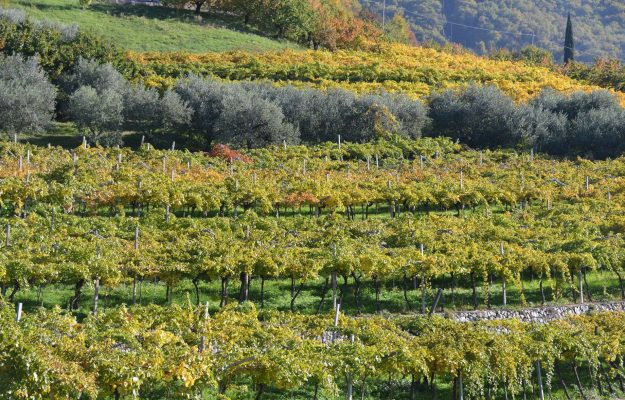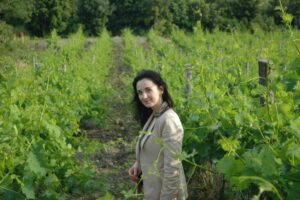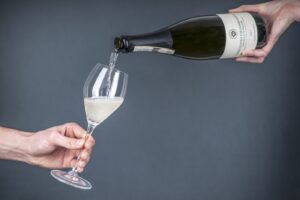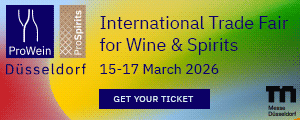The Italian agro-food sector, on the whole, even during the Pandemic, has been confirmed a counter-cyclical sector. Some sectors have been and are still suffering , but have not collapsed, such as the wine sector. Other sectors, such as pasta, tomato, and so on, have even grown. Consequently, “the earth” has also been confirmed counter-cyclical, in the sense that is a strategic and primary asset of the agro-food chain. Land values are stable, thanks to the production of crops and raw materials that generate high added value products, such as those of the vine, in the most prestigious and famous wine territories. The wine sector has followed the same path as other productions, like pasta and oil, as well as Balsamic Vinegar of Modena PGI (and, above all, the Traditional Balsamic Vinegar of Modena PDO), which are enhancing territories, producers and varieties, as one product becomes the driving force and amplifier of the value of the other, in an increasingly “cross-supply chain”, and, at the same time, the appeal of the territory. This is, in synthesis, the reflection of Lorenzo Tersi, at the helm of LT Wine & Food Advisory, and one of the leading experts in mergers & acquisitions and applied finance of the agro-food sector in Italy.
“The earth “breathes”, even in the Covid-19 era. In this pandemic period, the whole world has realized how much beauty and wealth the agricultural, wine, oil and other territories have produced in Italy. These are fundamental values, which have also reaped many investments recently, from foundations and not only, as finance has found solidity in the production chains. For instance, the “historic” productions such as wine, oil and pasta, but also new ones, such as in Italy, the kiwi supply chain, or in Calabria, where the cultivation of avocados is making headway”. Regarding the issue of enhancing the product linked to the landscape and to the producer, wine is the brightest star, especially in the famous territories, Barolo, Montalcino, Valpolicella, Bolgheri, just to name a few, and other supply chains, as mentioned, are following it. “Let’s take pasta, for instance, the sector has a turnover of 4.7 billion euros, and in the Covid-19 era has seen consumption grow +24% around the world, and +28% in Italy. Now, one often finds the name of the variety of the wheat used, on restaurant menus, such as the Senatore Cappelli, but also of the producer, next to the description, or of the place of origin, such as Gragnano or Fara’ San Martino, to name a few famous ones. Furthermore, distribution is also changing, and so the pasta brands that were almost exclusive to catering, are now also found in wine bars, in delicatessens as well as in some modern distribution; obviously, price positioning is different. Plus, the same thing has been happening for some time regarding EVO, Extra Virgin Olive Oil. We now talk about varieties of EVO, sometimes the producers, and also very specific areas of origin, linked to collective brands of the territory, such as Olio del Sebino, as well as those that are above PDO and PGI, such as Laudemio, in Tuscany, for instance. These are narrating elements, supported by substance, of course, which create added value and appeal, especially if you manage to narrate the different supply chains together, linked to each other”. This is how territories are enhanced, and consequently they become districts.
The villages are a widespread architrave, and will become more and more attractive, from all points of view. “Territories where the land produces agro-food excellence often have great appeal towards high-level accommodation, employment, the quality of life, and much more. And perhaps, considering the period we are all experiencing, also for reshaping lifestyles. many people are thinking of returning from the cities to the small villages and will bring different skills and different visions with them, which will be useful to project these villages into the future. That is, provided that they are well served on the infrastructure level. For instance, Valpolicella is a territory where you can be in the center of a city like Verona, in 15 minutes and also have an airport nearby, high speed transportation, and so on. Otherwise, if there are few or no services, they become exclusive villages, like for a retreat, but that’s another story”.
Copyright © 2000/2026
Contatti: info@winenews.it
Seguici anche su Twitter: @WineNewsIt
Seguici anche su Facebook: @winenewsit
Questo articolo è tratto dall'archivio di WineNews - Tutti i diritti riservati - Copyright © 2000/2026









































































































































































































